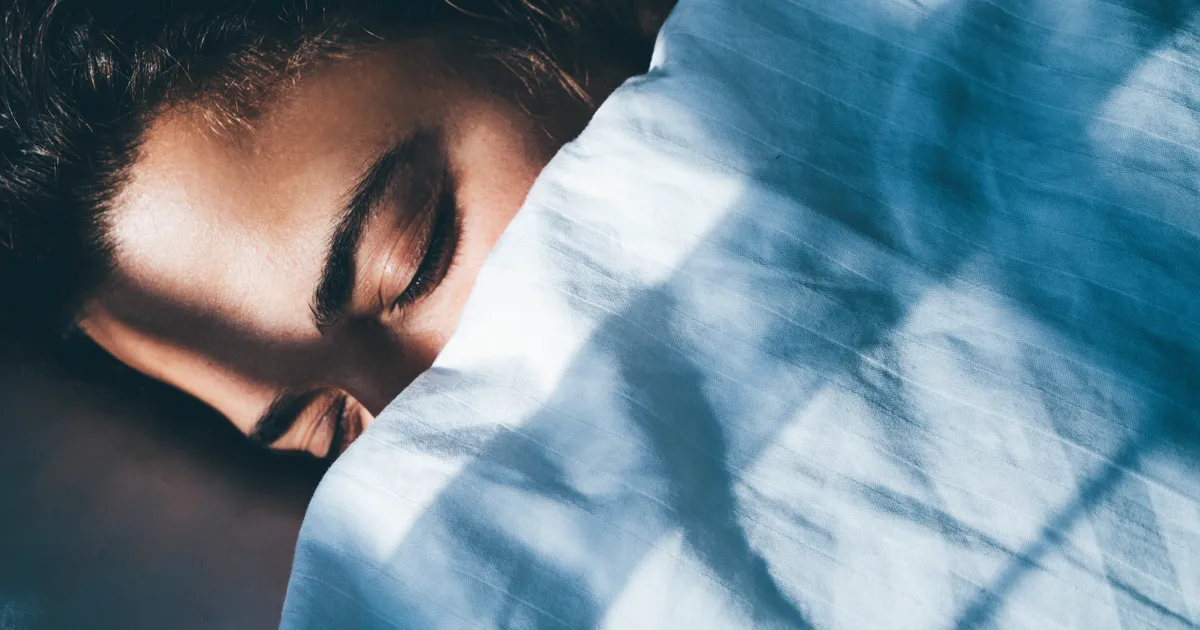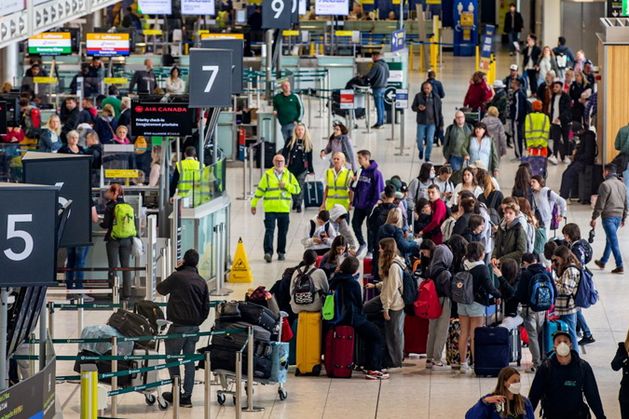By Allison Kenien
Copyright huffingtonpost

Recently, my kids started teasing me about snoring. I didn’t realise I was snoring, so I headed down a Google rabbit hole.
I searched through the reasons why people snore, and soon I discovered that lifelong habits that I thought were normal were actually warning signs for obstructive sleep apnoea.
Obstructive sleep apnoea is a condition that involves a person’s airway closing when they sleep. It might close partially or completely.
Of the nearly 30 million Americans who live with obstructive sleep apnoea, up to 80% have never been diagnosed, according to a report from the American Academy of Sleep Medicine.
How are so many people missing the signs of sleep apnoea? I asked experts to break down the symptoms and explain why they can be easily overlooked.
Snoring is the biggest red flag ― but it’s not always consistent.
Snoring is a well-known sleep apnoea sign, but many people don’t realise they’re doing it. I missed this sign for years because I was asleep, my husband was asleep, and I wasn’t doing it consistently. Sleep apnoea can look a little different for women, and snoring isn’t always the No. 1 sign.
Snoring can also get easily overlooked by a person who lives alone. Eventually, they might move in with a significant other or share a room while traveling with friends who will point out their noisy sleep habits.
Once the person’s snoring becomes bothersome, they might decide to get checked by a specialist.
“The most common reason why people end up in my clinic is because they have what we like to call ‘unacceptable snoring,’” said Dr. Robson Capasso, chief of sleep surgery at Stanford Medicine in California.
While most snoring tends to feel unacceptable, it’s not always caused by sleep apnoea, and it’s not always a health risk. When you breathe, air passes the tissues at the back of your throat, causing them to vibrate and make noise. This is called primary snoring, and there’s no disruption to airflow. It might be annoying to others, but it’s not dangerous.
With sleep apnoea, those tissues can relax and collapse, causing your airway to become fully or partially blocked. Snoring is the sound of air working its way through the tissues. It can also cause pauses in breathing, choking or gasping, depending on the severity of the blockage.
“I would say that for almost everybody who has received complaints about their snoring, it really doesn’t hurt to have a further evaluation and see if this is primary snoring versus sleep apnoea,” Capasso said.
A sleep assessment will show if you are having drops in oxygen frequency, which point to sleep apnoea. It’s important to get treated since the condition can lead to health issues like heart disease, stroke, or accidents.
If you’re curious about whether you snore, Capasso recommended the SnoreLab app, which helps you track the frequency and intensity of your snoring. While it can’t diagnose sleep apnoea, it can give you a clearer picture of your habits, like whether you’re snoring for five minutes or several hours.
Feeling tired during the day is also a sign (even more so if you believe you’ve had a full night’s rest).
We live in a rise-and-grind culture in which it’s easy to tie our exhaustion to a full-time job, a busy schedule or parenthood. But if you’re getting less oxygen and experiencing breathing disruptions all night long, you’re not just going to be tired. You’re going to be sleepy to the point of passing out at inappropriate times.
Ever since I started driving at age 16, I’ve had trouble staying awake on trips that take more than 20 minutes. It’s grown worse as I’ve aged, and I always thought this “highway hypnosis” was normal. Now, I’ve learned that it’s a warning sign.
In addition to getting sleepy while driving, sleep apnoea sufferers might drift off in situations in which a well-rested person wouldn’t be struggling to stay awake.
“You’re allowed to be bored, but dozing off or falling asleep whenever you are sedentary — watching TV, reading a book, sitting in the theatre —those are not normal things,” said Dr. R. Nisha Aurora, a sleep clinician and AASM spokesperson.
Of course, the key here is determining whether you’re still falling asleep in these situations despite getting consistent, lengthy sleep most nights.
“If you’re having a good number of hours of sleep … and the sleep schedule is regular … you shouldn’t be sleepy; if you are, you should see a sleep specialist,” Capasso said.
Before ordering a sleep test, physicians will typically evaluate environmental factors: Does the person work overnight shifts? Do they drink or smoke? Do they stay up late bingeing movies?
The first step is fixing those issues. Once good sleep hygiene is established, if problems persist, a provider might recommend a sleep test.
Sleep apnoea can also be confused with normal signs of aging or stress.
Beyond snoring and sleepiness, I was surprised to discover that insomnia, nighttime awakening, and certain daytime problems like mood changes and cognitive issues can be connected to sleep apnoea. These are symptoms that can easily be attributed to other conditions like aging, stress, menopause, or, in my case, the challenges of being a parent.
Aurora said that there’s a “glaring issue with underdiagnosis in women who really tend to present differently, especially once they’re post-menopausal.”
Many post-menopausal women experience insomnia, and physicians might focus on that rather than testing for sleep apnoea. Other markers of sleep apnoea in women can include headaches, depression, brain fog, and frequently waking up to urinate.
Research shows that the prevalence of obstructive sleep apnoea increases as women experience menopause, which can disguise the symptoms and make diagnosis even more difficult.
“We can’t just say, ‘this is normal, this is part of aging,’” said Aurora. “It could be just menopause alone … but they still should get checked out.”
So… what should you do?
Report any symptoms to your doctor, even if they seem “normal.” As awareness has increased, physicians are more likely to proactively evaluate a person with symptoms that look a little different.
“You’re always going to find that one paper that’s going to link sleep apnoea to almost everything… golf scores, hair loss, skin health,” Capasso said.
While sleep apnoea can affect various aspects of a person’s life, it’s important to avoid obsessing over sleep perfection or less-established symptoms.
“You hear sleep apnoea is underdiagnosed, and therefore, untreated,” Capasso said.
“My feelings are actually kind of mixed about this, as I believe there is a significant dichotomy. On one side, there is a community that’s super tuned to their health, longevity-oriented, wellness-oriented … I jokingly say there is almost hyperawareness of sleep apnoea, as sleep tests are positive in a significant percentage of adults.
“On the other hand, perimenopausal women, underserved communities, people with cardiovascular diseases – this is the population where we should work harder to increase awareness. This is a population that needs to be more proactively investigated.”



